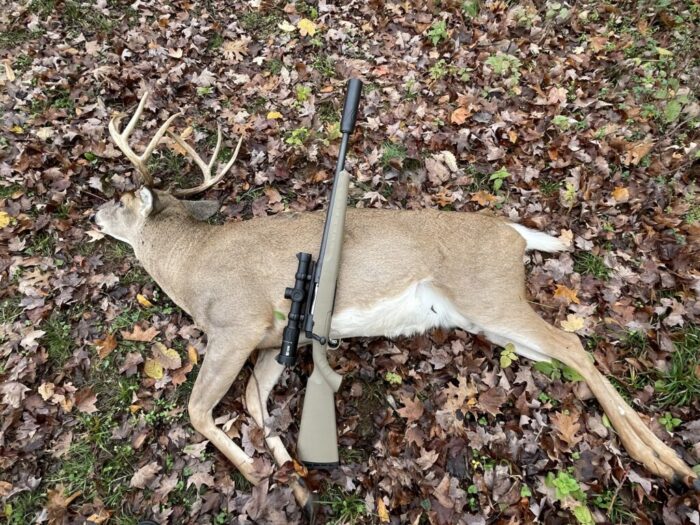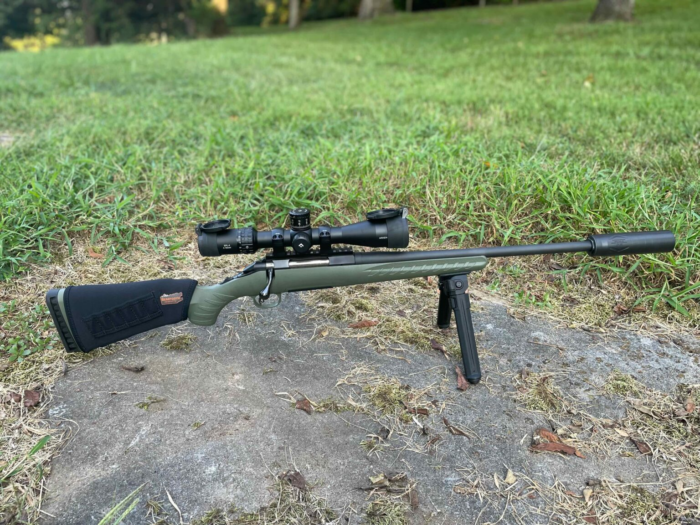While American hunters often view suppressors through the lens of tactical equipment or “tacticool” accessories, European hunting culture has long embraced these devices as essential tools for ethical, efficient and considerate hunting practices. The stark contrast between European and American approaches to suppressor use in hunting offers valuable insights that could reshape how U.S. hunters view and utilize these important tools.
Historical Context
In many European countries, particularly in Scandinavia, the use of suppressors for hunting has been not just accepted but expected for decades. Countries like Finland, Norway and Sweden have long considered it discourteous and potentially unsafe to hunt without a suppressor. This cultural difference stems from a broader European hunting philosophy that emphasizes environmental stewardship, respect for both game and neighboring properties and hunter safety above all else (including hearing protection).
The European Perspective on Noise Pollution
European hunters have developed a thorough understanding of how hunting-related noise affects both wildlife and neighboring communities. In densely populated countries where hunting grounds often border residential areas, suppressors serve as a practical solution for maintaining positive relationships with nonhunting neighbors. This approach has helped preserve hunting traditions in areas where urban sprawl might otherwise have created conflicts between hunters and residents.
Safety and Communication Benefits
One often-overlooked advantage of suppressor use in European hunting is the enhanced ability to communicate effectively in the field. Without the need for heavy ear protection, hunting parties can maintain clear verbal communication, leading to safer and more coordinated hunts. This practical benefit has particular relevance in driven hunts, where multiple hunters and drivers must coordinate their movements and actions.
Impact on Wildlife Management
European game managers have observed that suppressed hunting provides distinct advantages in wildlife management programs. The reduced noise signature allows for more effective culling of pest species and more efficient harvest of game animals, as nearby animals are less likely to be startled by the sound of gunfire. This efficiency has proven particularly valuable in population control efforts and in maintaining healthy wildlife numbers across relatively small hunting territories.
Technical Considerations and Equipment
European hunters typically employ what Americans might consider “premium” suppressors, often integrated into the rifle’s design rather than treated as an aftermarket accessory. These purpose-built hunting suppressors focus on optimal balance, lightweight materials and durability rather than maximum sound reduction. The rifles typically have shorter barrels to accommodate the suppressor. The emphasis remains on practical field use rather than achieving the lowest possible decibel readings.

Training and Education Differences
The European approach to hunter education places significant emphasis on proper suppressor use and maintenance. New hunters learn about the benefits of suppressors not just for noise reduction, but as tools that can improve accuracy by reducing flinch response and managing recoil. This educational foundation helps create a culture where suppressors are viewed as essential hunting equipment rather than exotic accessories.
Conservation and Ethical Considerations
European hunters have long recognized that suppressors contribute to more ethical hunting practices. The reduced noise signature helps maintain a calmer hunting environment, potentially leading to better shot placement and cleaner harvests. Additionally, the ability to maintain situational awareness without hearing protection allows hunters to better monitor their surroundings and make more informed shooting decisions.
Legal Framework and Cultural Acceptance
Unlike the United States, where suppressors face significant regulatory hurdles, many European countries treat them as standard hunting equipment. This legal framework has allowed for the development of a hunting culture where suppressor use is normalized and their benefits are widely understood and appreciated. The resulting marketplace has driven innovation in suppressor design specifically for hunting applications.
Licensing and Access Considerations
The contrast between European and American approaches extends beyond just suppressor use to the fundamental process of becoming a hunter. In many European countries, obtaining a hunting license involves a rigorous education program that can span several months to a year, covering everything from wildlife biology and conservation to practical marksmanship and field craft. Interestingly, once licensed, European hunters often find acquiring a suppressor to be a straightforward process – in many cases, it’s as simple as purchasing any other hunting accessory.
This stands in stark contrast to the American system, where basic hunting licenses can sometimes be obtained through brief online courses, but suppressor acquisition requires extensive paperwork, long wait times, and a $200 tax stamp per device. For instance, in Finland, a hunter who has completed their mandatory education and licensing can typically walk into a hunting shop and purchase a suppressor over the counter, while their annual hunting permits for specific game species might actually require more documentation. This system reflects the European view of suppressors as standard hunting tools rather than restricted items requiring special oversight.
Practical Field Applications
European hunting practices demonstrate numerous practical advantages of suppressor use. From reducing noise pollution in populated areas to improving shot placement and follow-up shot capability, these benefits directly translate to the American hunting context. The European experience shows that suppressors can enhance both the effectiveness and enjoyment of hunting while promoting positive relationships with nonhunting communities.
Lessons for American Hunters and Legislators
As American hunters continue to gain access to suppressors through evolving federal and state regulations, the European model offers valuable lessons in their practical implementation. The emphasis on suppressors as tools for ethical hunting rather than tactical accessories provides a framework for changing perceptions and promoting wider acceptance. American hunters, and our legislators, can benefit from adopting this more practical, conservation-minded approach to suppressor use.

Looking Forward
The European approach to hunting with suppressors offers valuable insights for American hunters looking to enhance their hunting practices. By understanding and adopting elements of European hunting culture, American hunters can work toward a future where suppressors are recognized as valuable tools for ethical, efficient and considerate hunting. This cultural shift could contribute to the long-term sustainability of hunting traditions while promoting positive relationships with broader communities.
Read the full article here
